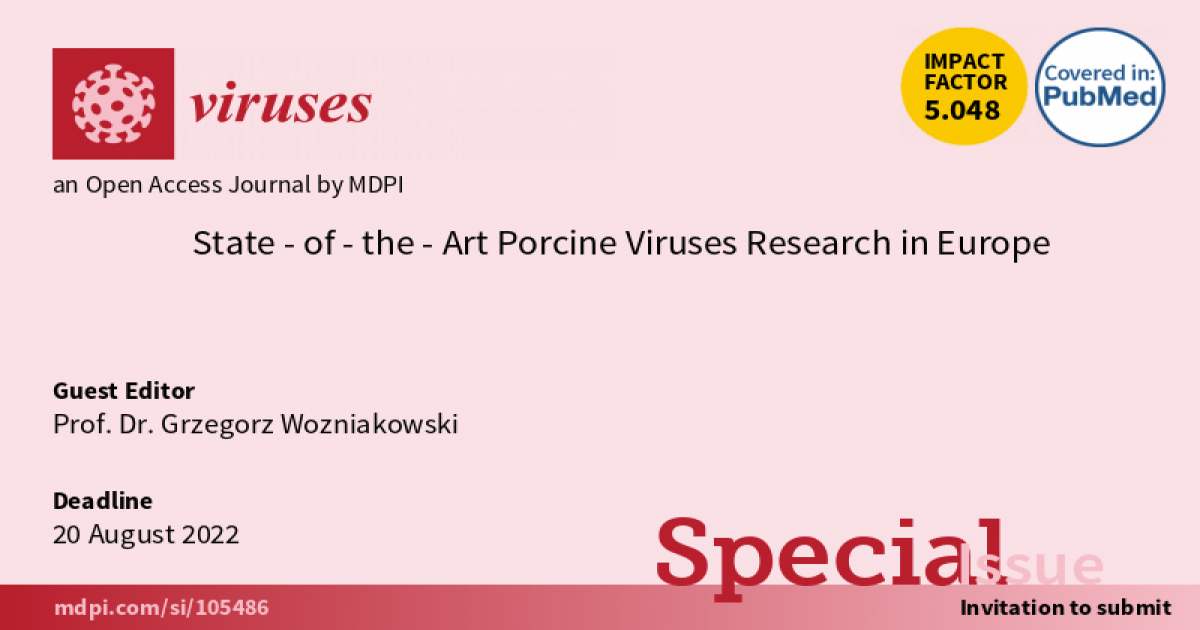State-of-the-Art Porcine Viruses Research in Europe
A special issue of Viruses (ISSN 1999-4915). This special issue belongs to the section "General Virology".
Deadline for manuscript submissions: closed (30 May 2023) | Viewed by 35820

Special Issue Editor
Interests: veterinary virology; epidemiology; poultry and swine viruses
Special Issues, Collections and Topics in MDPI journals
Special Issue Information
Dear Colleagues,
Taking into account the importance of pig production in numerous countries of Europe, the purpose of the forthcoming Special Issue is to discuss the most important topics related to swine diseases, including the aspects of prevention, epidemiology, control, and food safety. Therefore, I cordially to invite you to submit your relevant papers to the upcoming Special Issue of Viruses. Your valuable input will hopefully enrich the current state of knowledge and practical approach to the global production of pigs.
Prof. Dr. Grzegorz Wozniakowski
Guest Editor
Manuscript Submission Information
Manuscripts should be submitted online at www.mdpi.com by registering and logging in to this website. Once you are registered, click here to go to the submission form. Manuscripts can be submitted until the deadline. All submissions that pass pre-check are peer-reviewed. Accepted papers will be published continuously in the journal (as soon as accepted) and will be listed together on the special issue website. Research articles, review articles as well as short communications are invited. For planned papers, a title and short abstract (about 250 words) can be sent to the Editorial Office for assessment.
Submitted manuscripts should not have been published previously, nor be under consideration for publication elsewhere (except conference proceedings papers). All manuscripts are thoroughly refereed through a single-blind peer-review process. A guide for authors and other relevant information for submission of manuscripts is available on the Instructions for Authors page. Viruses is an international peer-reviewed open access monthly journal published by MDPI.
Please visit the Instructions for Authors page before submitting a manuscript. The Article Processing Charge (APC) for publication in this open access journal is 2600 CHF (Swiss Francs). Submitted papers should be well formatted and use good English. Authors may use MDPI's English editing service prior to publication or during author revisions.
Keywords
- swine production
- porcine viruses
- biosecurity
- welfare in swine production
Benefits of Publishing in a Special Issue
- Ease of navigation: Grouping papers by topic helps scholars navigate broad scope journals more efficiently.
- Greater discoverability: Special Issues support the reach and impact of scientific research. Articles in Special Issues are more discoverable and cited more frequently.
- Expansion of research network: Special Issues facilitate connections among authors, fostering scientific collaborations.
- External promotion: Articles in Special Issues are often promoted through the journal's social media, increasing their visibility.
- Reprint: MDPI Books provides the opportunity to republish successful Special Issues in book format, both online and in print.
Further information on MDPI's Special Issue policies can be found here.






